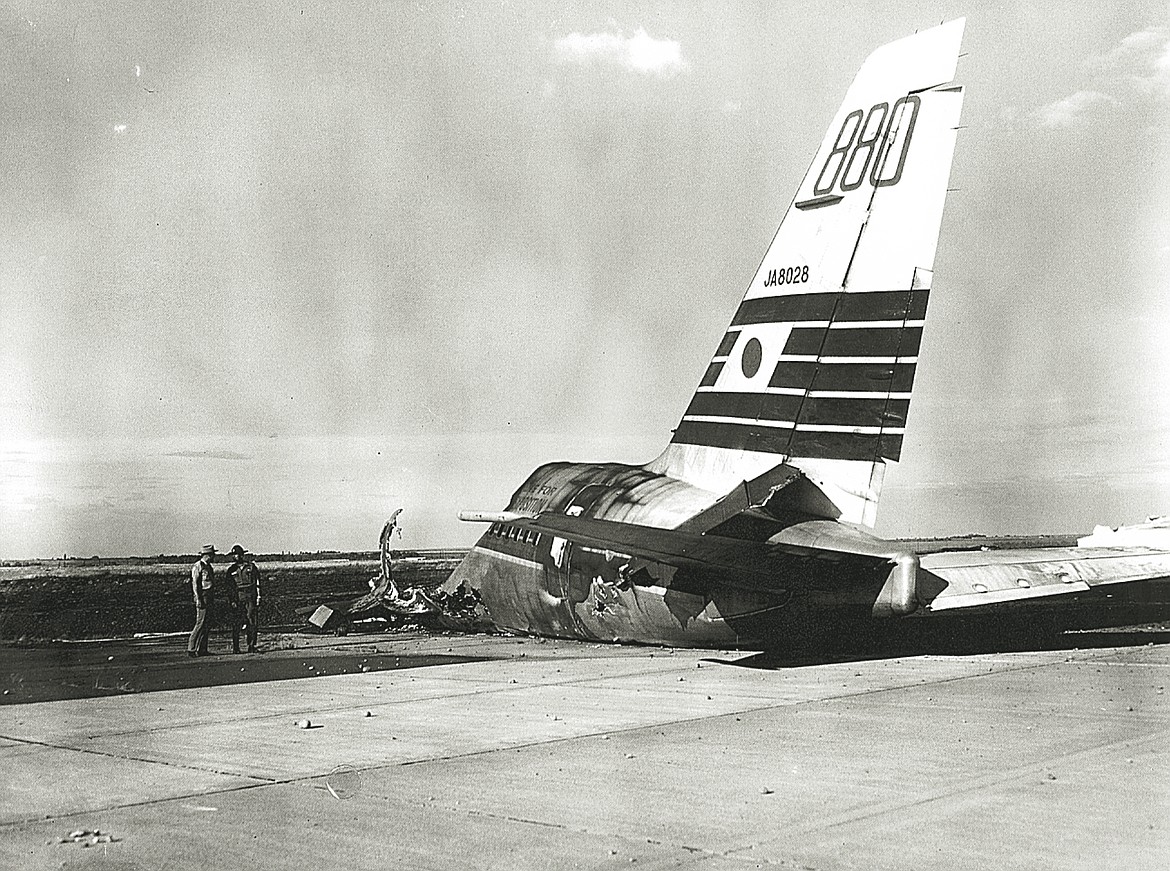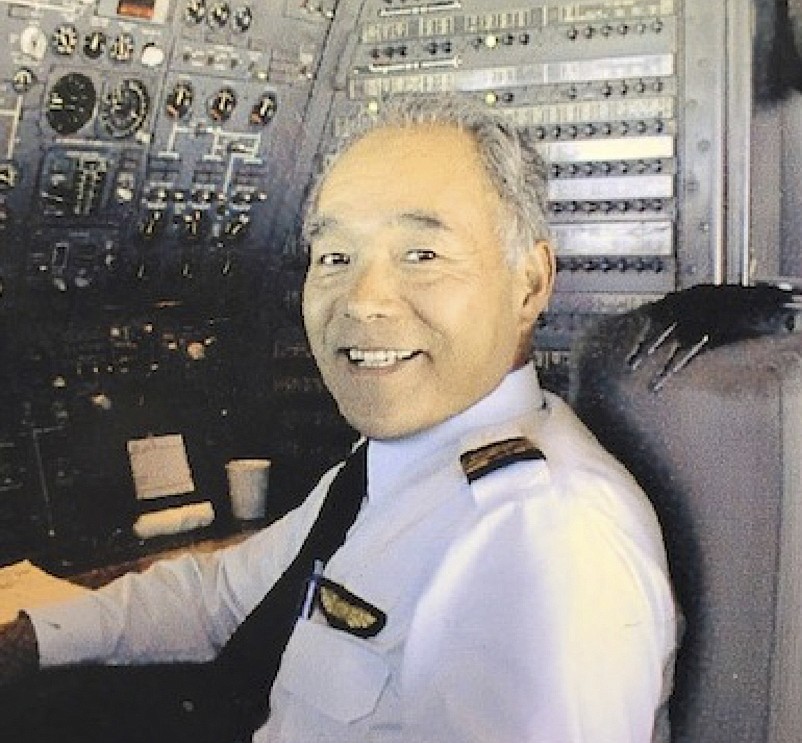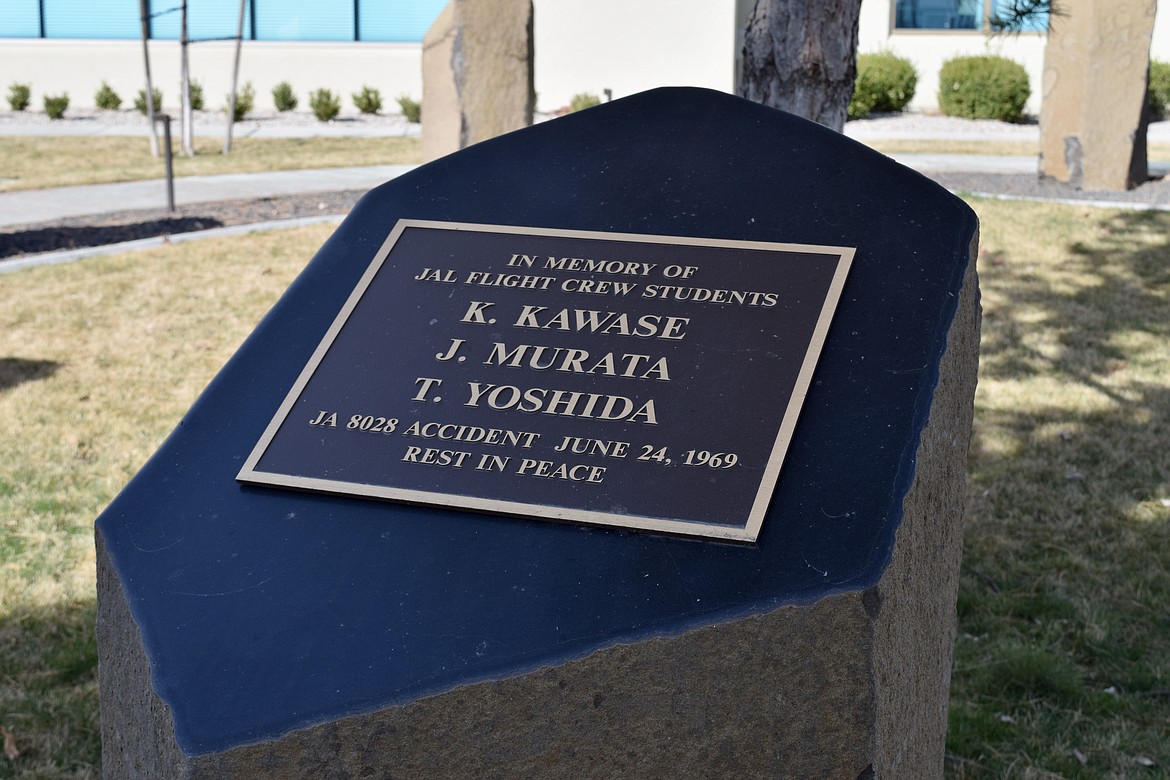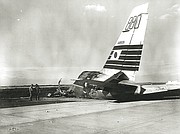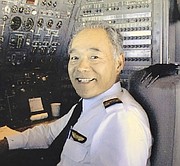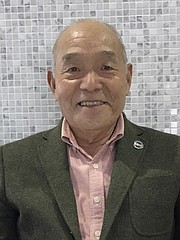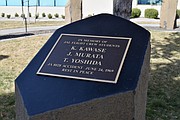Crash survivor sees Moses Lake as second home
MOSES LAKE — In the Clyde Owen Memorial Park next to the main terminal building of the Grant County International Airport, atop a basalt pillar, sits a plaque.
It honors the three Japan Airlines flight crew students — Junichi Murata, Kunitsugu Kawase and Toshiaki Yoshida — who were killed when their plane, a four-engined Convair CV-880, skidded off the runway during a training exercise, exploded and caught fire on June 24, 1969.
Two people survived that accident.
One of them, Nobuhiro Uematsu, now age 82, still considers Moses Lake his second home.
“Moses Lake is my hometown, but a bit far,” Uematsu wrote in an email to the Columbia Basin Herald.
A flight engineer with Japan Air Lines who retired in 2000, Uematsu has been back to Moses Lake many times since — including a stint flight training on 747s in the early 1970s — but he will never forget the four months he spent at Samaritan Hospital recovering from the injuries he suffered in that 1969 crash.
Japan Airlines, or JAL, had just started training pilots and flight crews at the airport here and would go on to do so for several decades.
“I started work at JAL as a mechanic of aircraft radio equipment, age 18 years old,” he wrote. “At the age of 24, I became a flight engineer.”
That day, Uematsu said, the five-member crew was going to practice turning off one engine during takeoff and landings to prepare the crew for dealing with such emergencies.
“At present, such dangerous training is mostly performed in simulators, but at that time there were no simulators with good performance, so all items of training were performed on actual airplanes,” he wrote.
They had already made several takeoffs and landings and had enough fuel for four hours of flight, he said, when the wind hit the aircraft and the plane lost lift, came back down, and began skidding off the runway.
“I looked at the front instrument panel but the vibration was so intense and it was not clear to see,” he wrote.
After the airplane came to a stop, Uematsu wrote that the crew struggled to get out of the cockpit before realizing the back of the plane was gone.
“I turned around and looked to the rear side of the cabin. I saw blue sky. The airplane had broken at the rear section,” he wrote.
And it was on fire.
As he jumped out of the airplane, Uematsu said he noticed he had been covered in jet fuel and had caught fire too.
“I felt my pants started burning before I touched the ground,” he wrote. “I stood in the fire and rushed out of the fire but my pants were severely burned.”
He burned his hands attempting to douse the flames, he wrote, and eventually took his pants off, and stood with fellow survivor, pilot Kazuhiko Suda, watching the plane burn.
“I don’t know how long we stood there,” Uematsu wrote.
According to the official history of the Port of Moses Lake, the fire burned for more than an hour despite efforts to extinguish it.
He said he remembers being asked to get into a car and going to Samaritan Hospital, where he was put in isolation with severe burns from his elbows to his finger tips and from his knees to his ankles. He was in so much pain that he could only sleep when he was sedated.
“Several days later, there were lots of blisters on my limbs like potatoes and body fluid flowed out,” he wrote.
The recovery was slow, he wrote, but once he and Suda were no longer in critical condition, they could start physical therapy.
“Every day after breakfast, I started with the exercise of the fingers of the hand and continued to the arms and feet,” Uematsu wrote. “I had pain all the time, so sometimes I had a painkiller injection and exercised. After that, the burned skin became hard scabs and hard to move even the fingers of the hand.”
“He was the best patient I ever had,” said Patricia Hildreth, 86, of Moses Lake, who was Uematsu’s physical therapist. “His burns were very serious. It was a long rehabilitation process for him, and we did what we could to get him back.”
“He wanted to walk out onto the airplane (when he left), he was very determined. I admired him for that,” she said. “I never heard him complain.”
Uematsu wrote that he had the first of several skin grafts in Moses Lake, and he was up and walking by the time he was discharged in October.
“When I returned to Japan, I entered a hospital in Tokyo,” he wrote, “and received a skin graft for my right heel.”
Uematsu wrote that he then spent two more months at a “hot spring that was effective for burns” to “restore my physical condition” and then went back to work, where he trained to be a flight engineer for the DC-8, Douglas Aircraft’s four-engined competitor to the Boeing 707.
Japan Airlines soon retired the troubled CV-880, Uematsu wrote, while he went on to train on 747s and DC-10s, eventually becoming a flight engineer instructor.
He has come back to Moses Lake several times since, and wanted to come again this summer to see the new Memorial Park at the airport, though it looks like the COVID-19 pandemic will prevent that. His fellow survivor Suda died a few years ago, Uematsu wrote.
“When this coronavirus fuss subsides, I would like to go to Moses Lake again and see a new plaque,” he wrote.
“He’s been a gracious person in remembering and being appreciative of the care,” Hildreth said. “He did not forget the people who died.”
Nobuhiro Uematsu is grateful to the people of Moses Lake, and to Samaritan Hospital, for the care received, and believes it allowed him to go back to work and live his life far more quickly than he might have otherwise.
“I appreciate Moses Lake as a second hometown,” he wrote. “Thanks for the friendship of the people of Moses Lake.”
Charles H. Featherstone can be reached at cfeatherstone@columbiabasinherald.com.




